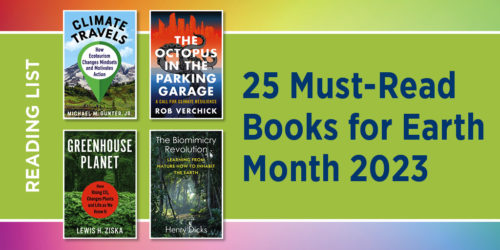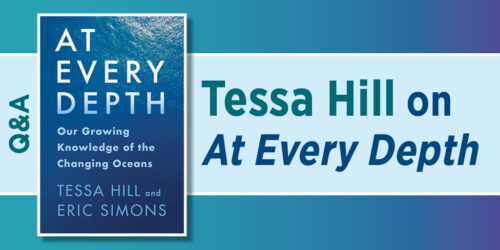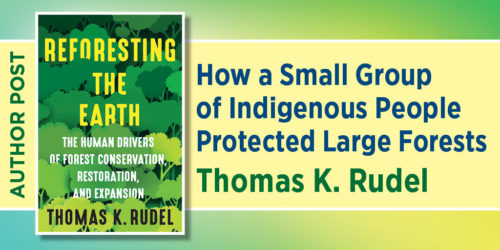Pete Hill on River Profiles

Centuries of mismanagement and destructive development have gravely harmed American waterways, with significant consequences for the ecosystems and communities built around them. In River Profiles: The People Restoring Our Waterways, Pete Hill delves into the deep-rooted challenges facing American waterways, highlighting the significant ecological and social repercussions of centuries of mismanagement and destructive development. Drawing on his two decades of experience in watershed restoration, Hill presents a compelling narrative of individuals who have dedicated themselves to the restoration of streams and rivers across the United States. But what prompted him to write a book that highlighted the people doing the work? How did he decide whom to interview, and what challenges did he face in the process? Read on to discover the answer to these questions and more.
Q: What prompted you to write this book?
Pete Hill: During my many years managing stream-restoration efforts in the District of Columbia, I found myself both energized and unsettled by the level of controversy surrounding different approaches to stream restoration. I understood the passion surrounding the work but noticed that the science in the field was unresolved. People were pushing different approaches to address different problems. Most were adamant that their approach was the only responsible way to do this type of restoration. It was not always the collaborative atmosphere that most people might imagine when thinking of environmental restoration work.
The field is truly multidisciplinary, pulling in specialists from a variety of fields: engineers, landscape architects, biologists, fluvial geomorphologists, and on and on. Despite efforts to integrate these different perspectives, many projects became sources of disagreement, where people with vested interests, whether academics or competing consultants, would question the approaches. As I managed and planned these projects, I always felt that these issues would be of interest to the broader public and that, should people understand, they might become more engaged in the work. And the people working in this field are inspiring and fascinating. Some bring hard-won field knowledge while others bring years of research to the solutions. I felt like it was a story that needed to be told.
Q: How did you go about choosing the subjects you profile for the book?
Hill: I was guided by a desire to profile people who represent different aspects of the work. Stream and river restoration, broadly construed, includes not only engineers and scientists but also advocates and community organizers. It includes planners and government staff who undertake the unheralded work of permitting and fund raising. It includes the biologists who continue on after the construction crews leave, assessing the ecological effects of the project, which often aren’t fully understood for decades. I started out profiling the owner of a restoration company, a singular individual based in Annapolis, Maryland, whom I knew well. I then visited an academic team of geologists in Lancaster, PA, whom I knew and whose work I found inspiring. From there, I drew on my contacts in the field and solicited suggestions from colleagues and friends. In many cases, people I interviewed recommended others. Like a kid in the candy story, it was hard to cut myself off.
Part of my goal was to write accounts of people’s work in unguarded and honest moments. I wanted to avoid the “talking points” that represent a lot of the reporting on ecological restoration and many other personality profiles. This required that people actually wanted to talk to me and wanted to share. There were some restoration efforts that I had hoped to write about but because of either a requirement of public information officer overseers or just a sense I got that people might be guarded, I decided to not pursue them. Some of my choices were perhaps a tad self-serving. I ended the book in western Washington state, in part because I had attended college out there and wanted to investigate the outcome of the historic removal of the Elwha Dams on the Olympic Peninsula.
Q: What were the biggest challenges you faced interviewing people?
Hill: Primarily, the challenge was the volume of information that these people have and want to share. They are excited and passionate about their work. It becomes a challenge just to process that much information. I was simultaneously physically exhausted and energized after spending two or three days in the field with these folks. In some locations, such as Atlanta, I had no previous familiarity with the area or the people and was very worried about misrepresenting the work happening there. I realized from my time in DC that these efforts span space and time and the “story” is not just one story but something that changes depending upon the particular individuals and particular time period. I eventually settled on the fact that I was not producing a journalistic piece but rather a portrait of certain people at a certain place and time. My goal was to tell their stories in a way that was neither laudatory nor critical but, hopefully, just more complete. I wanted to reveal more than the outcomes that these people might list on a grant application. I wanted to get to core of who they really were as people.
Q: Can you tell me about a moment in this overall process that you wouldn’t have imagined at the outset?
Hill: There were many moments that I will hold in my memory bank. One was hauling extremely heavy logs around in suburban Cincinnati with a group of people undertaking a low-tech restoration project where we were essentially acting like human beavers. Another was connecting with a young basket maker from the Eastern Band of Cherokee Indians. Another was meeting numerous amazing activists in Atlanta over a four-day period. On that trip, I had too many potential activities to fit in my available time. I had to choose between kayaking the South River with a person I did profile or attending a community organizing stream walk/meeting. These were tough choices for me. I ended up going on the stream walk and witnessed the community organizer guru Dr. Yomi Noibi demonstrate his gift. One disturbed resident became argumentative and upset while listing a range of insults, past and ongoing, that the community faces. Dr. Noibi laid hands on the man like a preacher and brought him back into the fold. I felt like I was witnessing an impromptu example of the power of community organizing and healing.
Thanks to Molly Alves and other employees of the Tulalip tribe, I was able to experience the entire range of activities used to reintroduce beavers into streams on the west side of the Cascade mountains in Washington State. From setting traps to tagging to releasing, I experienced the day-to-day work and was able to get to know some of these motivated individuals.
I think these personal connections are what makes this book unique. Although I didn’t have a plan for it, these sorts of connections are what I had hoped for. I think that they made writing the book possible. I once read before that most people write from inspiration rather than despair—I guess that is the case for me as well.
Q: This is your first book. How did you find this undertaking compared to any of your other work?
Hill: The process of writing this book was extremely significant for me personally. I was disillusioned after working on these efforts in the District of Columbia for thirteen years. I guess you could say I was burnt out. I felt unresolved about my role with the work, and writing this was akin to following a trail of breadcrumbs toward resolution. I wasn’t entirely confident that I could write such a book but after I made my first attempts at the early chapters and found an editor who affirmed and supported this project, I pushed on. With each successive trip to these locales and each day I spent with these individuals, I felt not only obliged to tell their story but also lifted up by their work. It’s hard to describe the importance of hope and belief, but they are real and as important as the rocks, logs, and plants that constitute the supplies used for this work. The individuals I profiled shared this with me along with their stories. I hope that, in some way, this book gives readers this sense of hope. It is essential to meeting the ecological challenges we face today and those our children will face in the future.







